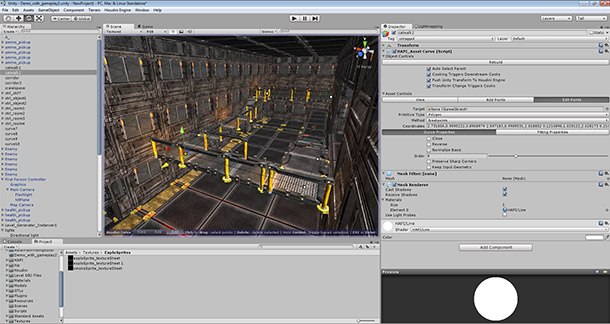Side Effects Software announces the Houdini Engine, which allows for deep integration of Houdini technology into a wide variety of Digital Content Creation tools.

TORONTO -- Side Effects Software has announced the Houdini Engine, which allows for deep integration of Houdini technology into a wide variety of Digital Content Creation tools. Now both film and game studios can load Houdini Digital Assets into their go-to applications and build a more integrated procedural pipeline that does not rely on baked-out data.
The Houdini Engine is a compact API which extracts Houdini's core technologies into a powerful procedural engine for film and game studios to integrate into proprietary applications. Experimental plug-ins for popular DCC apps such as Autodesk Maya and the Unity game engine are under development at SideFX Labs.
“The Houdini Engine makes it possible for more CG artists to experience the power and flexibility of our procedural workflow.” says Kim Davidson, President and CEO, Side Effects Software. “ In essence, we have turned Houdini into the world’s most powerful plug-in for any number of DCC apps.”
The Houdini Engine is also being used to power plug-ins for Autodesk Maya and the Unity game engine editor which will be released in the coming months as experimental software from SideFX labs. Side Effects is making these plug-ins available to artists to solicit feedback from the wider CG community before taking them to market. All CG artists interested in testing these plug-ins are invited to go to labs.sidefx.com to sign up for the upcoming technology preview.
The Houdini Engine works by leveraging Houdini’s Digital Asset technology. These digital assets can be built interactively using networks of nodes to define a controllable flow of live data, usually without writing any code. Houdini studios have been using these assets to successfully build robust pipelines where artists and technical directors create tools that are shared and re-used to ensure consistency across a project. The resulting efficiencies save studios both time and money which is critical in these challenging times.
Now with the Houdini Engine, these digital assets can be used by anyone. The assets can be loaded into any application where artists can set parameters to customize the output. Houdini’s procedural engine will then “cook” the asset and the results, previously only available to Houdini artists, will be delivered to the host application.
“When it comes to creating game assets, Houdini’s procedural workflow is a massive time saver,” says Jacinda Chew, Studio Art Director at Insomniac Games. “Even better, with the release of the Houdini Engine we can bring Houdini Digital Assets directly into our proprietary level editor and game engine. Artists and designers can use the interface they are most familiar with to create assets procedurally or use their regular toolset to create or customize assets and instances manually. This means we can build and iterate faster. And as an independent developer heading into the next generation of consoles, that’s a big, big win for us.”
The Houdini Engine API is available today as an enterprise solution for film and game studios looking to bring Houdini into their pipeline or third party companies looking to incorporate Houdini technology into their existing applications. If you are interested in understanding more about this game-changing technology, contact us at houdini_engine@sidefx.com.
The Houdini Engine and the plug-ins for Maya and Unity will be previewed at SIGGRAPH 2013 in Anaheim at the Side Effects booth [#557] and the Houdini User Group meeting.
Source: Side Effects Software









